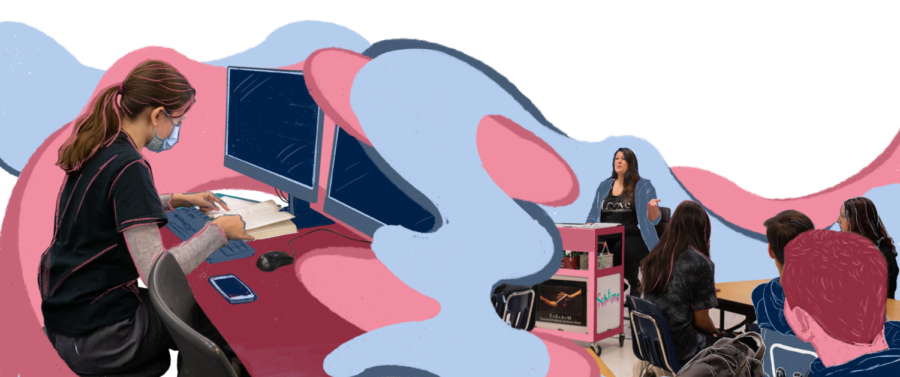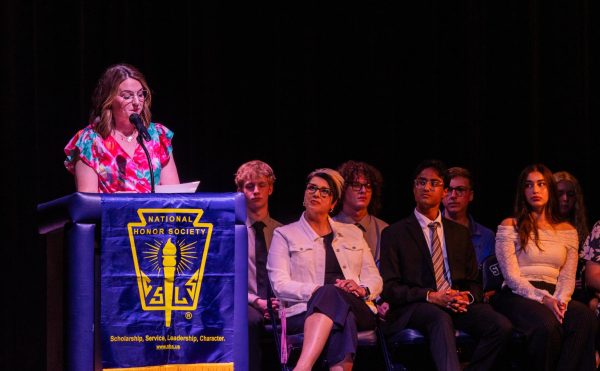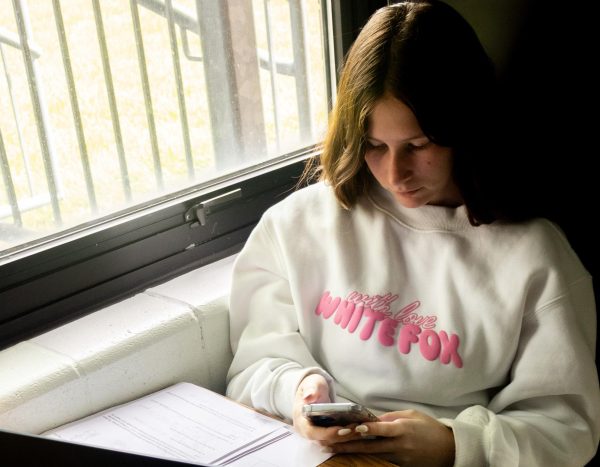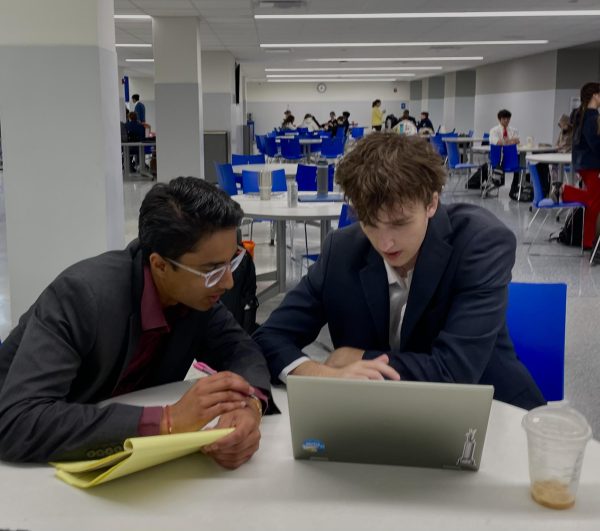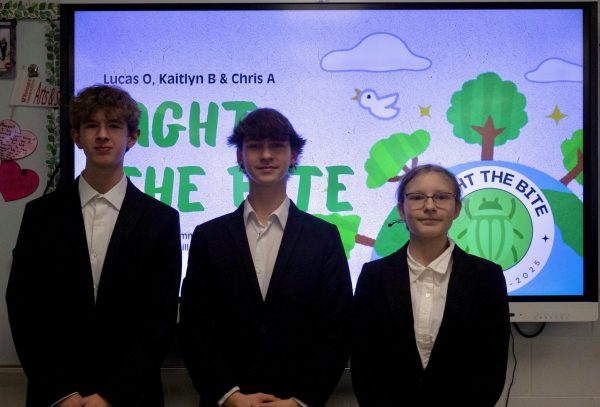A Blended Beginning
Evolution to a more innovative campus starts with blended learning
A student doing schoolwork in a library melts into an actual classroom. Blended learning creates the opportunity to expand the classroom outside of the standard cement walls of a school.
The idea of taking a course in which some days you spend in the classroom and others you spend doing your classwork in a coffee shop, library, or at home, is one that is often reserved for college. However, these “blended classes” are soon to become a widespread reality on campus.
This year, the Francis Howell School District is piloting these classes in all three high schools. At Central there are three blended classes being offered, Coach Malach Radigan’s Teen Health and Wellness course, Mrs. Jessica Bulva’s English 3 course, and Mrs. Emily Harris’ AP Statistics course. The students taking these classes have the opportunity to learn in class on some days, and on other days go to the library to do work, or meet with their teacher for more individualized help. Mrs. Bulva further explained what she envisions with these kinds of courses.
“My hope is that on tasks that are more independent, a student doesn’t need to be in my classroom,” Mrs. Bulva said. “If I don’t have a classroom full of 28 kids, and they’re off reading their books all over the building or from home, I can use that time to meet with a couple of students.”
The goal is to introduce students to these college environment classes to better prepare them for if they find themselves on an actual college campus.
“[Students] are trusted to get these tasks done either during their own time or during that designated time for class … they can learn time management,” Mrs. Bulva said.
Blended classes can also provide students with a better choice in course options, for those who struggle in APs, yet find regular classes not challenging enough.
“There are some students that might not necessarily choose to take an AP class… but are still capable of more of a challenge than they might be getting in our regular [class],” Mrs. Bulva said. “Sometimes other students’ behaviors, a teacher needing to spend time on classroom management, or other [interruptions] might stand in the way of a kid getting the challenge that they need to get.”
These courses also provide a more individualized approach to each student’s learning; there is no classroom pace to be set on. This allows teachers to meet each student’s educational needs, giving them the room they need to reach their full potential.
“If I can sit down with [students] and talk to them about their writing, then I can build them to where they need to be,” Mrs. Bulva said.
While the system is still new, Mrs. Bulva’s students have already started to see the benefit in blended learning. Junior Elaina Rainwater enjoys the freedom and maturity it gives her.
“It’s nice to be in control of where I do my work, it makes me feel like an adult,” Rainwater said. “It’s a nice way to manage my time and practice doing that.”
The idea for blended learning stems from observing other schools similar to our own that have implemented programs like this into their curriculum. Through observing these innovative schools, the Francis Howell School District was inspired to test it out in our schools. This task was passed down to April Burton, the Instructional Technology content leader at FHSD, who took the idea and ran with it. Burton is now working to fully develop the program for the district.
“We’ve done a ton of research from districts all across the country on how they implemented their blended programs,” Burton said. “So we know what the best practices are, but we’re also working on how that fits with our schools and our students.”
The only way for this program to truly succeed is for the students to succeed, especially since they will be in an environment in which they aren’t being constantly monitored.
“[We will] focus on student goals, because for students to be successful in a course where they don’t necessarily have to be in class every single day, students have to really tighten up on their responsibilities,” Burton said.
The goal is to introduce students to these college environment classes to better prepare them for when they find themselves on an actual college campus. Ingraining more college campus traits into campus is a goal Dr. Sonny Arnel has been wanting to work toward.
“For several years we’ve looked at ways that we can help our students look for [college] transition opportunities,” Dr. Arnel said. “So how can we create a learning opportunity that will help you transition?”
Students taking blended classes have to deal with the responsibilities a college student would have, needing to stay on task, build a calendar, study, and manage time, all of which are vital skills to have when entering college.
“[Blended classes] allows students to have some exposure to that [management], and then implement and develop those skills,” Dr. Arnel said. “It’s our responsibility to teach kids the skills they need.”
This year there are only three blended classes being offered as the school works out any kinks in this new system, but more and more teachers are ready to begin implementing them in their courses for next year.
“We’re going to be learning from our students and faculty and what’s best for them to make it function the way we want, the way we envision,” Dr. Arnel said. “So this year is going to be a great learning opportunity for us.”
This new program will work to help students in all aspects of their learning, to meet their needs, to help them get the most out of their education. As this program develops, Dr. Arnel hopes to continue to move towards this vision of an academic oasis, wanting to implement more programs such as power lunches, and the development of specific high-level programs that students can be a part of and travel to the other FHSD high school campuses for.
“I think within five or six years a lot of these [programs] are going to be here, and I think that’s really awesome for our students,” Dr. Arnel said.
Your donation will support the student journalists of Francis Howell Central High School. Your contribution will allow us to purchase equipment and cover our annual website hosting costs. FHCToday.com and our subsequent publications are dedicated to the students by the students. We hope you consider donating to allow us to continue our mission of a connected and well-informed student body.



